Introduction
This is an account of my first travel experience beyond Australian shores.
It began late in 1958 and extended to January 1961.
It is told through my letters back to Australia. Battered old slides and the occasional postcard have been cleaned up and downloaded to provide visuals to illustrate the collection of the aero grams that I regularly sent back home.
As I had never cultivated the habit of keeping a regular diary, my mother had agreed to keep a record of the journey for me by saving my letters. In transcribing them, I have occasionally interspersed memories, feelings and more factual travel details that help to fill out the story.
The ocean journey began on 17th of September 1958 from Sydney, after traveling up from the family home in Wagga Wagga in southern New South Wales. These are the notes that I did jot down once on board before the actual letter writing began.
Chapter 1. The Strathnaver Journey. Spring 1958
Today was my last day in Sydney for who knows how long before leaving on the SS. Strathnaver bound for England.
I was expecting to feel very excited by now, but instead I must admit that I’m feeling very flat and listless after all the preparation. Somehow the scope of what I have planned ahead is beginning to hit home.
This is not just any holiday and I wont be home in a hurry. It has been on top of my list of things to do since well before I left school in 1950. It has meant years of work and study to get a degree, and a couple more years saving up to travel.
There was time early in the day for shopping with Mum and Auntie Linda a few travelling requirements. I love the large, sturdy pigskin handbag that Linda encouraged me to buy. She is a wise and experienced traveller and has given me a lot of tips and encouragement to make the trip.
We did some other last minute shopping together, and then visited St Benedict’s church to light a candle, with a promise to light one on my return. There were farewells to be made to my uncles, Jack and Jim, and we finally set off for Circular Quay – Aunt Linda, her friend John Connelly, my sister Claire and Mummy and me with my bulging suitcase.
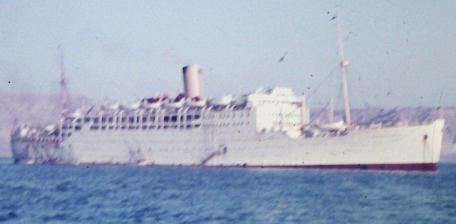 The ship seemed so big! We found my cabin, which had three berths, had a good look around, upstairs, downstairs, around the decks, then the goodbyes – a little bit teary.
The ship seemed so big! We found my cabin, which had three berths, had a good look around, upstairs, downstairs, around the decks, then the goodbyes – a little bit teary.
The family gathered below among the crowd on the quay but the rain started pouring down and everyone started to leave even before the ship’s horn began its warning blasts. It was getting dark, and after a delay of half an hour or more, we finally pulled out from the dock and passed through Sydney heads while having dinner! What an anti-climax!
The 18th September 1958. Anti Seasickness pills and their side-affects have caused me to do nothing but sleep all day – between large meals, that is!
I was rested enough to begin the entertainment with a dance night – I was asked to have two dances with one Horscht, a young German man who then wanted to promenade after the dance! I preferred to chose the alternative, which was an early night, and shot through to bed.
The ship arrived in Melbourne at 7:30 AM the next morning and the weather was still very dull; we had a chance to go in to town, explore the city and do a little shopping, and then a couple of us went to the movies to fill in time. We watched Kind Hearts and Coronets.
The next day was also quite uneventful except for a disappointing telegram from a special boy friend, Ian, who had planned to come down to Melbourne to see me off – just letting me know that he was unable to come! That depressed me even more than the wet weather and a sense of anticlimax and nervousness was beginning to get a grip on me.
Sunday the 21st September 1958. Still in Melbourne so I went to Mass at St Patrick’s Cathedral and then met up with a friend, Bill Hannan from Wangarrata days. He had encouraged me sometime before to consider visiting the city of Perugia in Italy where he had attended the University for Foreigners for the purpose of learning the Italian language.
He was not too encouraging about finding paid work on the continent but assured me that the study was a great thing to do and that it cost very little to live there as a student. That cheered me up a lot and the day improved when I met up with my brother and his friends and brought them out to have a farewell lunch on the ship and have a good look around. They were most impressed!
We finally sailed out of Port Melbourne at 10 PM, soon after I had received a final phone call from home. The effect of all the colourful streamers and lights and the waving crowd below created a pretty contrast to the farewell in Sydney. As the ship pulled away from land reality kicked in, and so did the thrill of fully registering that the big adventure has begun!
Once we had sailed out into the ocean I made for my cabin and began to pen my first letter home.
Dear Mum and Dad,
Everything going well so far and I am feeling very proud of myself — no sea-sickness, although I feel bound to admit there has been a full dining room at all meals up to date, so I’m not Robinson Crusoe!
I don’t suppose you had time to notice, mummy, but the girls’ names in my cabin are Janelle and Ginette and they suit them well! They are experts with cosmetics, having both worked behind counters in chemist shops. They take an hour to put on their make-up in the morning, which stops us getting to the first sitting of breakfast, and they take another hour to write up their diaries at night.
The details include each course of each meal and such other important items as the rank of the officer who smiled at me and, and in what corridor of what deck the incident occurred.
The steward assigned to our cabin is quite a nice fellow. I love his accent .He tells me that he is a Geordie who comes from the eastern side of England. Hereafter he will be referred to as Patterson; this is how he likes to be addressed. He has already given me an extra blanket, and looks as if he is going to be very obliging in little ways.
Yesterday I did nothing but sleep and eat all day. At night there was a bit more dancing.
I found that the young German man who had pursued me on the first evening had been waiting outside the dining room for half an hour for me but I managed to give him the slip and retreated to the safety of the writing room.
Thank you both very much for the beautiful flowers. They fill two large vases as well as my drinking glass! G. And J. was very impressed, as they didn’t get any! There were also two lovely orchids from John Connolly waiting for me when I got back from dinner.
After surveying the passengers as a whole, I have leapt to a couple of conclusions – firstly that the migration system may be breaking down a little as there are dozens of Pommies on-board who are returning home, and secondly, that good old Treasurer Arty Fadden must be paying a generous age pension, enabling lots of elderly people to make the trip as well. This can only be a good thing!
I am hoping that the weather will begin to brighten up a little as we leave Melbourne – it won’t be any too soon as I still feel like hibernating again today. Shipboard life is going to take a little getting used to.
Looking forward to you phoning me again on Sunday,
Meantime much love to everyone.
Adelaide. Tuesday the 23rd September 1958.
Dear mummy and daddy,
After leaving Melbourne we have run into the roughest weather so far and there were a few seasickness casualties, though not me so far! Though I was certainly ready for a quiet day and an early night. This will be a brief note so that I can post it before leaving Adelaide.
We arrived here early this morning, had breakfast, and then set off by train for the big city.I find that it is really not much more than a big country town.
The surrounding hills look very lovely and can be seen right from the heart of the city. They don’t seem much further away than Willens Hill in Wagga.
I went on shore with two of the young men who sit at my table. It turns out that they are both detectives from Sydney. They are good company — one looks like Rock Hudson! and has a girlfriend who is obviously infatuated. He has already had five letters and three trunk calls from her already
We had a look around the city, and then took a colourful-looking tram to Glenelg, a beachside suburb of Adelaide on the shore of Holdfast Bay, which, we were to learn. was where the first settlers arrived in the early to mid 1800s.
There is a fine monument honouring the pioneers and explorers just where the tram stops in Moseley Square. It has a bronze replica of HMS Buffalo on top – one of the sailing ships bringing migrants and cargo from across the sea, to dock along side a very long jetty which stretched way out into the bay. – A smaller jetty is still used today.
I was also happy that we had come out here when I realized that this is probably where Great- grandma Sutton and, no doubt the Crennans and other ancestors too, would have disembarked when they arrived in the mid 1850s. Auntie Bet may be able to add more detail.
We didn’t get to have a swim. It was a pretty tame beach compared to Bondi. Sydney is so lucky.
I really enjoyed the day out, and it was good to have a little break on dry land, but also exciting to be on our way again.
- The Pioneer Memorial in Moseley Square where the trams stop at the beach front at Glenelg, one of Adelaide’s favourite suburbs
- the Pioneer Memorial with a replica of the HMS Buffalo on top
There has been little organised activity to date, leaving little to do besides eat and snooze and promenade, so at this rate I shall be putting on loads of weight! The meals are quite good though rather homely in spite of the elaborate names on the menu. Ice cream turns up at every meal under various exotic names. The other night it appeared as The Favourite?
When I asked the steward how they’d know which was my favourite ice cream, he asked in his Cockney accent ‘ Are you going all the way to London miss? ‘ – ‘Yes ‘ says I. Well — he says — by the end of five weeks ye will be bound to strike it lucky!
We are due to leave Adelaide at about midnight. I am gradually getting to know my table companions. They include two physios, Jeanette and Rosemary – I find that we have lots of friends in common.
There are also the detectives, Peter and Bruce. They should prove to be very protective travelling companions when going on shore in foreign places!
I have started to play some deck tennis with Barbara and Laurie Oliver, an English couple, so I have begun some exercise, though not winning too often!
For now till we reach the next port.
Lots of love — — — — —
Somewhere south of Fremantle! Friday the 26th September 1958.
Dear Family,
In the morning we hit Fremantle, so this will be my last chance to put Australian stamps on letters and I have quite a list to write tonight. We will be there by 7:30 am and leave at 3.30pm so if I have time, I’ll pop a bit more onto the end of the letter just before we leave.
I think we will all go on a conducted tour this time. Those who did so in Adelaide seem to have had an interesting time, and what’s more, all the ones who went on the tour there ended up with sample bottles of wine from the Barossa Valley, and we were very envious.
Despite warnings about crossing the Great Australian Bight, it was fine. It seems too good to be true.
Everyone is beginning to settle into the lazy life now. It seems ages since we left Sydney and
it is already becoming increasingly difficult to work out what day of the week it is, let alone the date — and the only time anyone wants to know the time is just before meals! It will probably be even more confusing after leaving Perth, given the length of the voyage across the Indian Ocean.
To play sport I have had to cut all my fingernails right down at great cost to my vanity. I’m beginning to enjoy the deck tennis, – the competitions start after Fremantle.
I am beginning to get to know quite a few young people and I am very glad that I took my time about it.
The crowd at the table are quite good fun including the two physiotherapists who trained at Prince Alfred Hospital in Sydney and know quite a lot of the university crowd that I do, then there are the two coppers of course, and a married couple from New Zealand who are on their honeymoon and heading for England.
I have already mentioned the young English couple who are particularly good company- Barbara and Laurie, and there are lots of others that I still have a month to get to know, and a few others that I’ll be spending a month avoiding.
You certainly get an interesting mix of people on a one-class ship.
Bye for now – the ship is about to sail —-lots of love
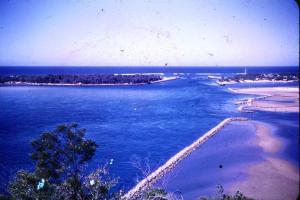
Perth Harbour
Reporting from Perth — Saturday 27th September 1958.
We arrived early in the morning and I went on a tour by coach with Peter and Bruce. It is a very pretty city, the suburbs have wide winding roads and lots of native trees and flowering shrubs.
The university was very impressive — sandstone buildings, mosaic floor at the entrance of the main hall and a fascinating ceiling of aboriginal motives. I also enjoyed looking out across the harbour towards the Indian Ocean before we set out.
 Leaving Perth was harder than anticipated as I realized that this will be my last glimpse of Australia until who knows when!
Leaving Perth was harder than anticipated as I realized that this will be my last glimpse of Australia until who knows when!
The next day being Sunday it seems strange without going to Mass – very old habits die hard! However, the weather is now delightful with fairly high seas, and the day turned into a lot of fun when we finally played off the mixed doubles deck tennis, even though our team lost both matches!
By Monday I was beginning to feel a bit depressed again, I must confess. Who knows why?
Perhaps it was a little bit of homesickness already and an awareness of stepping into unknown waters. I don’t have any fear of travelling on my own, but maybe there’s a little loneliness in there as well.
I have been enjoying an occasional game of solo with Brian and Jill, newlyweds from New Zealand who are on their way to London. Thankfully, I am better at that than tennis!
I’m also beginning to become conscious of the lack of eligible men on board. Mind you, I have just had an invitation from the third officer, quite a beautiful young Apollo, to go up on the bridge and learn a bit about the mysteries of navigation, and how things work in the steering room, though it seems that I might have put the first officer off side a little bit by asking too many questions. We were soon chased off back to our proper quarters.
Things improved even more that evening when all the junior officers not on duty attended the usual dance. The next night we were introduced to frog racing of all things, and that was followed at 11.30 with more dancing on D Deck with friend, Peter Bradley. It is now warm enough to have the occasional swim and sun bake as well.
Another interesting development was receiving an invitation to sit at the dining table of the deputy purser, an Englishman, Peter McGregor. He has been giving me some friendly attention, which I quite enjoy.
I guess all of this means that if I am not yet taking to shipboard life too enthusiastically, it’s more up to me than anyone else, and all things considered, I am really grateful and excited to be heading out on such an adventure.
On board the SS Strathnaver, 1st of October.1958.
Dear family,
When I arrived back from Perth still in time to post letters, or so I thought, I found that my cabin wouldn’t unlock. I finally got in about 10 minutes before we sailed, grabbed the letters and tossed them over-board to someone below to be posted, so I do hope you receive them!
I found Perth to be much more interesting than Adelaide because we went on our tour
through some very pretty suburbs where the houses are built in amongst the native trees, and we also had a chance to check out some of the shops.
There are wide roads and no fences, the whole effect being delightfully informal and very pretty. It is a very clean city — no slum areas that we noticed.
We had a look through the main parts of the university and were very impressed, particularly with the main hall, which has a beautiful mosaic entrance and a very high ceiling of thick beams covered with aboriginal motifs.
The only land that we have sighted since we set out across the Indian Ocean came into view yesterday.
These are the Cocos Islands. We passed very close to them and got a few pictures. They are very flat and covered in palm trees and a vast turquoise coloured lagoon is visible in the centre. There are very few inhabitants — the Governor, Sir Clooneys Ross is a director of CSIRO in Canberra. Australia’s principle science institute. We were just able to make out one person waving a friendly handkerchief to us. Any event outside shipboard routine can spark a lot of attention!
- cocos islands
- Cocos Islands
The SS Strathmore passed us on Tuesday night on its way to Australia, sailing so close we were able to shout excitedly to the passengers on deck, and could hear them cheering back. It was a beautiful sight, outlined by thousands of little lights. Next, the Himalaya passed us last night on its way to England, but it was rather an anti-climax as it didn’t come very close to all – the two captains apparently are not on very friendly terms with one another, so the gossip goes.
Our Captain is an Australian and apparently a good sport. The junior officers have been allowed to come to some of the dances for about the first time in history, which is certainly a good thing, as the male situation is impossible and their presence provides just a few more men for the girls to vie for!
Tomorrow we arrive at Colombo, the capital of Ceylon, early in the morning, and leave at 10 PM so we will have a full day there to see the sights and clean out the bazaars.
I am feeling a bit off-colour today, so if this note seems a little disconnected you will have to excuse me.
The ship has had quite a roll on since yesterday. They tell us we are ploughing through the tail end of a hurricane and it is very steamy.
We passed over the equator at 7.30 last night but there was no ceremony. It has apparently been abandoned on the P&O ships after a couple of accidents occurred. I can’t imagine what they could have been.
The days have been flitting by with everyone doing much the same thing day after day — games of tennis, a swim, an occasional game of solo, and the rest of the time sleeping, eating and lolling about in deckchairs.
On the whole, the passengers on board are a quiet lot, but I am getting to know different people all the time, though the tendency is to get stuck in the same crowd.
I entered in most of the competitive sports and, true to style, was eliminated very quickly in all except the ladies darts competition in which I managed to get into the quarter finals! .
I’m sure that often playing darts in the evenings at the golf club in Griffith with Ian this year helped with that, – and what’s more, it doesn’t require a lot of stamina! Vigorous sports have never been my forte!
I hope to do better it in the next lot of competitions. I have had several sets of deck tennis with a couple of the officers. They provide stiff competition, so I should be improving a little.
The Mad Hatter’s tea party was held on Thursday night – a gala dinner with crackers and whistles etc provided for everyone. It was quite good fun seeing how inventive some people were in the headwear department.
Will write again soon, with much love to all.
Sailing along the west coast of India. Tuesday.
Just a brief note to report that the ‘wog’ hit me good and hard last night, and this morning I shifted cabins for a day or two to be on my own, but I am now confined to bed in the ship’s hospital.
I am feeling a fair bit better tonight and will probably be allowed out tomorrow, but I don’t think I’ll be feeling fit enough to go ashore at Bombay as I had hoped to.
I am not totally disappointed, as they tell me it is a rather grim place, and we saw enough of the way the other half live when we visited Ceylon.
After having eight straight days at sea, it was so good to go ashore there. Six of us shared the
hire of a Buick and chauffeur to be taken on a tour, and my reaction to driving through my first eastern city was a sense of excitement and unreality.
Colombo was really very interesting – though, for the main part, there seemed to be a lot of poverty in the city and countryside and the standard of living very low.
Many of the people are unemployed and spend their days hanging around rather grim little huts, which pass as shops in most of the villages we passed through. The food is scattered about, including meat, which hangs in the doorways to be picked over, just high enough to be out of the reach of all the stray animals dashing in and out.
Once we got out of the city the drive was very pleasant – for the most part we were travelling through lush tropical vegetation, alternating with the greenest of green rice fields.
I broke all records by spending half an hour browsing in jewellers at Mt. Livinia yet escaping without buying anything, though the distressed owner chased after me as we left.
I felt rather mean not letting them persuade me to buy. Actually, some of the gems were magnificent – we had a geologist with us and he was able to tell us which ones were glass and which were real. I just need to keep reminding myself that the less I spend the longer I can travel!
We visited the Catholic cathedral of St.Lucia, which was really beautiful, with a high dome, and the whole interior was white with a
magnificent altar and statues.
We also saw inside a Buddhist temple where the priests wear yellow robes and shaven heads, and where one has to take one’s shoes off before entering, and then tip the young lad who makes his living helping us to put them on again. The temple was brilliantly coloured and full of religious scenes, some of them remarkably like scenes from the gospel.
I discovered that 70% of the population is Buddhist,
and many of the Tamils are Hindu. Apparently Ceylon is very diverse and interesting culturally. Many races have made their way there over the centuries because of the trade routes. It was colonized by Portugal for a while before the British, who created a Crown colony lasting from 1815 up until 1948, with a Governor directing from London.
During this period a lot of wealth was created through tea and rubber plantations – this was apparently helped along by the British importing a work force of up to 1 million indentured Tamils, mainly from India. In 1948 it became the Dominion of Ceylon, becoming part of the Commonwealth as the Empire started to break down.
I began to realize just how little we were taught about the countries to the north of us.
All told, I really enjoyed my first very brief taste of southern Asia and found it very interesting. Maybe there will be an opportunity to see more on my way back home!
Next — Bombay — arrived there in steaming heat, still feeling very ill and in the ship’s hospital, so did not go ashore. I saw only a scattering of old men in rags sleeping on cement on the wharf below, which did nothing to increase my desire to go ashore, though some of the passengers reported that they enjoyed visiting the city more than Colombo, and found it more interesting in spite of pestering peddlers and distressing sights of grim poverty.
I am disappointed all the same to be missing out on glimpsing one of India’s major cities, and having such a limited experience of Asia.
I am hoping I will be feeling well enough to enjoy our next stopovers at Aden and in Egypt.
Sailing through the Arabian Gulf. 8 AM Saturday, 11 October 1958
Dear family,
This afternoon at two o’clock we arrive at Aden ahead of schedule and will leave again later tonight. I’ll be looking forward to some mail there for me. We are getting our first taste of the Red Sea climate, which is extremely hot and steamy with a very calm sea – unpleasant
enough to get me up and letter writing before breakfast.
I am still feeling fairly seedy and have been taking it very quietly the last few days, as I didn’t want to miss any more ports. There have been 790 other cases on board, and unfortunately I had a worse attack than most.
Everyone looked after me well and it was quite good to be in the hospital. The nursing sister is a very nice English lass and the chemist an interesting young fellow who was happy to be prescribing for a fellow pharmacist.
By coincidence, he was in our taxi, mummy, when we drove to the jewellers after delivering my luggage to the ship just before we left Sydney!
Once the ship had docked, I went ashore with Barbara and Laurie, and we made our way straight to the shopping area in the streets alongside the docks, and spent most of the time Christmas shopping, you will be pleased to hear.
Aden is a seaport city at the entrance to the Red Sea. It has a huge natural harbour within the crater of a dormant volcano.
I read that British Petroleum established an oil refinery and tanker port there in 1839.
It grew to be one of the busiest ports in the world under the control of the British East India Company, and is still a British crown colony today. After the Suez crisis in 1956, it became the main centre of British activity in the Middle East.
It is a strange place, the port area being built on the side of barren hills of solid rock. They have virtually no rainfall, so there is little vegetation apart from a few trees in the streets.
There are dozens of shops and stalls squeezed in together along the narrow streets. And there is a tremendous amount of really good stuff to choose from at half the price I might have expected to pay for it. There are cameras, toys, colourful oriental clothes and knickknacks — perfumes, scarves, incense, such a variety. I was able to buy a colour slide viewer for 32 shillings, normally £3.15.
We went for a drive up over the hill to Crater City, which is built in a crevice between two walls of rocks. It was very busy there — lots of different nationalities — mainly Arabs, Indians, Jews and Africans wandering among the bazaars and market stalls. The pedlars and beggars made things rather difficult, incessantly pestering as we made our way down the narrow, winding little streets.
The taxis were quite cheap to hire. They were all large American cars with left-hand drive. The whole experience was very interesting — such a mix of unfamiliar sights and sounds and different languages and choices of merchandise.
It was Sunday, so I optimistically enquired about the possibility of going to church; I located two Catholic churches, rather to my surprise, but no service. After a lifetime of automatic regular church attendance on the Sabbath, it feels strange to be breaking the habit.
Wednesday.
The weather has been very calm and still, and it was very hot sailing through the Indian Ocean and the Arabian Sea, though it cooled off very quickly after we left Port Said.
We arrived at Suez at 10 PM on Wednesday night — we have been getting into all the ports early because of the fine weather — and about 200 of us got off the ship at about 5:30 AM the next morning and set off by taxi for Cairo, about 100 miles away.
The ship sailed on without us up the Suez Canal, and the plan was to board it again at Port Said at midnight.
The countryside was flat desert with high mountains of rock rising in the background. There wasn’t a tree for miles around, but as we came near to Cairo a couple of hours later we saw dozens of lovely Australian gums lining the streets. It was quite a sight for sore Aussie eyes — I really miss the eucalypts!

What a panorama of the city of Cairo. It fair took my breath away. In the foreground is the great Mohammed Ali Mosque enclosed within the Citadel.
On reaching Cairo, we were driven to the Hotel Metropole — a magnificent old style colonial building where we had a very welcome morning tea and picked up our guide for the day.
I might add that we were accompanied by armed soldiers all day, which we had to get used to, though generally speaking, anti-British feeling wasn’t obvious and we were treated very courteously.
There were any number of military camps on the way to Cairo and posters of President Nasser were on every spare square yard of fence and wall space, and photos of him inside every building.
He is certainly loved by the people and regarded as a great hero, and is credited with giving back to the Egyptians a greater sense of pride in themselves and their country.
Cairo is such a huge bustling noisy city with a massive population. It is called the city of 1000 minarets. These are tall spires crowned with small conical domes built on top of the many mosques spread throughout the city. These are used for sounding the call to prayer, sung out daily at dawn, noon, mid-afternoon, sunset and at night, which is when all Moslems, where ever they are, pause to kneel and pray.
Islam is now the official religion, though there are still many Christians, mainly Coptic, many of whom live in Middle Egypt. Both the men and women dress very modestly, many of the men are in white caftans and women have head coverings. We did not see a lot of women in public or serving in the hotels.
We did hear of one very old Christian Church, St.Sergius & St.Bacchus, built within the city walls over a cave, where tradition says the Holy Family sheltered when they fled to Egypt during Herod’s reign.
I would have liked to see it.
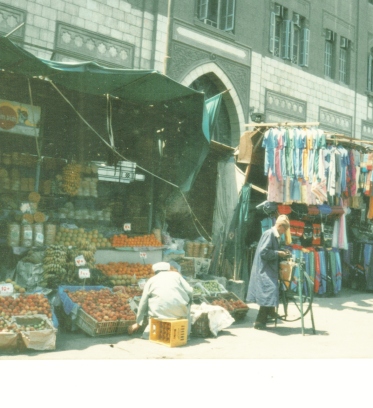
A market stall -one of many surrounding the square and side alleys.
Our first stop was the Cairo Museum near Tahrir Square. — This huge square, or more accurately a roundabout with at least six streets running out from it, is in the very heart of the city and is where people gather on all sorts of occasions including political rallies, as well as being a general meeting place. It has a circular island in the centre and it was an exciting challenge just trying to cross to it and navigate through the swirling traffic circling around it.
Along one side are shops and lots of outdoor cafes where you can relax and watch the passing parade – and try to accustom yourself to the level of noise for which Cairo is renowned.
The Cairo museum of antiquities is extraordinary and is justly famous throughout the world– trying to comprehend its significance left me in awe. It would take days to describe it in detail — there was so much to see, and we were told that much of the total collection is still held in storerooms. It was built in 1897 and all the artefacts were gradually assembled, and it opened about five years later
Most everything was taken from the tombs of ancient Egyptian kings. Its total display tells a story of what was once a very cultured and wealthy civilization extending over thousands of years.
Many exhibits would be worth millions of pounds, being made of solid gold or carved wood covered with gold leaf.

Golden Chair if Tutunkarmun in the Cairo museum
Many of the treasures had been discovered in the tomb of the handsome young pharaoh, Tutankhamen, including a solid gold death mask, which is said to be a great likeness.
There was beautiful jewellery and furniture and all sorts of familiar objects that were to help the deceased person feel at home in the afterlife.
We also visited the Royal Mummies Rooms where 22 mummies lie in chronological order- remarkably preserved considering that they are 3000 years old. I really enjoyed seeing the paintings and the particular styles of ancient Egyptian art, and also the beautifully executed hieroglyphic writings.
Probably one of the most beautiful sculptures was the head of Nefrertiti, wife of Akhenaten that has been admired world-wide as an almost perfect depiction of a woman.
Almost next door to the old museum was the new Hilton Hotel, almost complete, looking magnificent, modern and very American, as you would expect.
We spent about an hour in the shops there, but there wasn’t a lot to see.
We then had lunch at the famous Shepherd’s hotel – very palatial! – It has been the leading Hotel in Cairo since the mid-19th century. It was burnt down in 1952 during the anti-British riots and rebuilt again in 1957, just in time for us!
From there we went on into the Islamic quarter of the city to explore the Citadel — a huge fortress that dominates the city skyline. It had been built by the great hero and leader of the Arab world, Salah ad- Din or Saladin, as we know him, in order to protect the city during the time of the Crusades. He was also responsible for expelling the Crusaders from Jerusalem and sending them back to Europe.
Within the citadel stands the Mahomed Ali mosque. Its Sanctuary stands within a huge courtyard, constructed on much the same proportions as a cathedral, and its magnificent silver domes rise above the Citadel walls, and can be seen from every direction. It is the main mosque where the Moslems gather to pray, though there are 400 others in Cairo alone.
The practice is to pray five times a day, washing beforehand and wherever they happen to be, but on Fridays at midday they always ‘go to Mosque’.
I found much of the mediaeval Islamic architecture very beautiful- not just the mosques, but Madrassas, which were schools for teaching Islamic Law, and the houses and palaces as well.
My guidebook describes several identifiable styles over the centuries, depending on which dynasty was ruling at the time, as far back as the 10th century.
All façades are beautifully decorated with intricate geometric patterns carved into the stone, and one never sees representations of living people as in Christian places of worship.
Next. it was time to cross to the left bank of the Nile to Giza for the finale – to see the pyramids and the Sphinx.
They stand on a desert plateau, 20 km from the centre of Cairo.
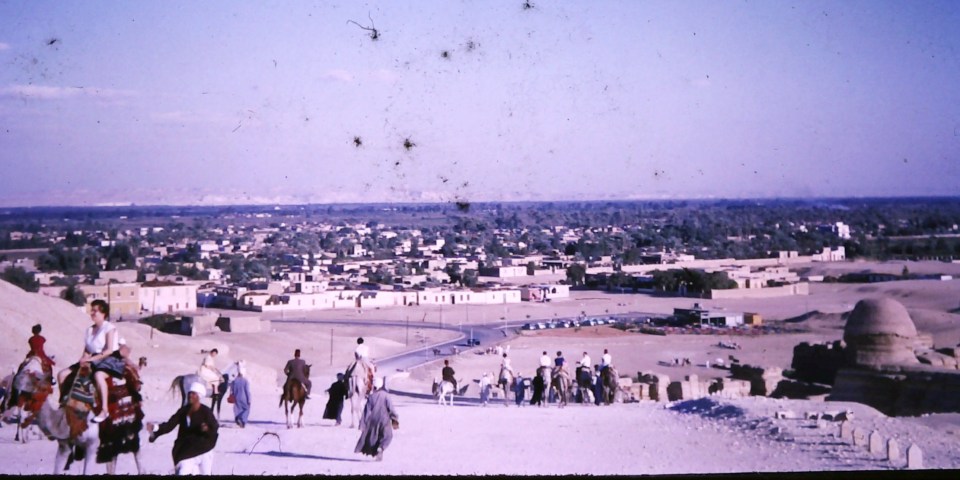
The Sphinx guarding Cairo – the markings are due to the age and state of the original slide image, all images have been individually transformed to digital.

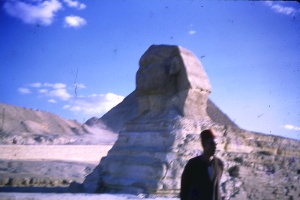
They did not seem quite as large as I somehow imagined they would be, perhaps because they are so beautifully proportioned.
The pyramids stand in a row, and the sides of all three of them are astronomically oriented, accurately lining up North-South and East-West, and more or less parallel to the River Nile.
The huge Sphinx is very compelling – the great body of a Lion with a Pharaoh’s head, its face gently corroding over the millennia.
We were each encouraged to take a camel ride up on to the dunes, past the pyramids and down the other side. It was quite thrilling, rather uncomfortable in the saddle, and also a little scary.
It gave us a great view of the Desert and looking back at the huge city in the distance.
Unfortunately it was rather spoiled for me by my miserable camel owner, an unpleasant, crafty eyed man who kept whining for a tip while I was still on the camel, and when I refused (we were warned not to tip), he led me away from the others to the edge of the dunes, with quite a drop below, and made the camel shy.
I wasn’t impressed, but I held my ground — or rather, held on to my camel — till we returned to base with no damage done.
All told, it had been a wonderful day — my first experience of a major Middle Eastern city.
There has been a tremendous amount of construction going on since Egypt gained its independence, mainly flats as the city expands.
It feels very alive, with many wonderful and exotic markets and bazaars, colourful scenes and chaotic traffic. The local people find refuge from the heat behind high walls in cool, restful courtyards and under palm trees.
What a day it had been! So much to absorb.
We left in the evening, happy to be returning back to the trusty Strathnaver, which was waiting for us at Port Said at the entrance to the Mediterranean.
There was still enough of the day left to have a quick look at what could be seen of the shops along the promenade.
Apparently, the city extends for some kilometres along the shoreline.

Nearby is Port Said’s Church of Mary Queen of the World- shared by Orthodox Copts, Eastern rite Catholics,& Protestants.
We were well aboard and organized for departure by midnight, totally exhausted and ready to be on our way again.
Sunday October 18th
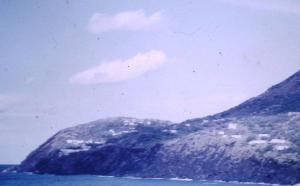
Mt. Stromboli
Dear Frank
We have just spent this last half hour circling around Mount Stromboli in the middle of the Mediterranean Sea, and it is one of the most magnificent bits of scenery so far. It is one immense rock, rising sheer out of the sea and one side of it is completely blackened with lava which has poured down the side from the chimney at the top.
The other side is very green, with a couple of little villages perched up on ledges of rock. It even performed for us and let out a few puffs of smoke, and we were able to get very close –the water is very deep right up to the edge of the island.
I think the Captain enjoyed scaring us – it seemed as if we might crash right into it, and then he swung the ship to the side at the last minute.
This morning from 7.30 till about 10 we sailed through the Straits of Messina between Italy and Sicily.
Unfortunately it was raining a bit and very overcast – not the best conditions for taking colour photos, but it was most impressive all the same. At one point the distance between the two islands is no more than 2 miles, giving us a very clear view of both sides, and we could see details of the city of Messina, even the traffic driving down the streets. Mt. Etna at 10,000 feet was visible in the background, and appeared to have snow on top!
This afternoon we should reach the strait dividing Sardinia and Corsica, so we are really getting our money’s worth of sightseeing today. The weather has turned cold since we entered the Mediterranean and everyone is back into winter clothes today.
Tomorrow we should reach Marseilles by 8 pm. and we don’t leave till midday on Tuesday. We will do a bus tour of the town on Tuesday and if I can find a strong enough bodyguard, might risk a tour of the nightclubs on Monday night as well!
I look forward to a letter from you and also one from Jan soon — believe me, mail is very welcome when you are this far from home!
Next time you hear from me I expect to be in good old London town, where, after some initial settling in and looking around, I may even try to find work for a while. I have had 5 1/2 weeks of loafing around at sea, and I’m really looking forward to being on land again.
Hope life is going well for you, lots of love from your big sister.
Last days at sea. 25th of October.
Dear family,
The weather is still fine and pleasant, which is remarkable since we are so near England, though we did have one short storm after leaving Marseilles where the Mistral hit us. It is a rather fierce but short-lived wind which frequently blows off the French coast. Luckily I’m still not seasick, much to my relief.
We have had occasional glimpses of the coastline of Spain, including the lighthouse at St Vincent’s Point, which has a convent below it. Unfortunately we missed seeing the Rock of Gibraltar as we passed by it at about 3 AM.
The time we spent at Marseilles was very pleasant, and don’t let anyone tell you that it is just another dull and dirty Port town as I had been told.
It is a very fine European city with spacious avenues lined with plane trees and lots of interesting winding side streets, wonderful shops and cafes, and 1 million French people to keep it bustling. It is the second-largest city in France and the main trading port of the country.
We went ashore at about eight o’clock last Monday night, going into the city by bus.
I could hardly wait to try out my French.
I worked out how to ask what time the last bus returned to the ship, and I approached a promising looking character — a man with just the right sort of beret and moustache and continental clothes.
I said my bit, but to my embarrassment the man replied in a broad Australian accent that he had no idea, as he had just got off the ship also!
He had managed to understand my schoolgirl French but I doubt if a Frenchman would have done.
I immediately put in my resignation as the French interpreter for the group.
We spent several hours just window-shopping and we were lucky to tumble into the most interesting street of all, which was unbelievably narrow, crammed full of the most beautiful frock shops etc I have ever seen.
The window displays of every single shop would put DJs to shame, and it was just as well it was night time and they were closed or I would be cold stony broke by now. None of the clothes were extreme designs- the most popular colours were olive-green, deep blue, rich pastels, reds and autumn tones.

Test driving a Cadillac in Marseilles! Ruth Logan’s father had a chauffeur and car waiting for us in Marseilles when we arrived.
The next day six of us set out in a Cadillac provided for Ruth Logan whose father is a shipping agent in Brisbane.
We had a chauffeur of course, so we set out at about nine am. and were driven around the old part of town first where the original port is.
Two large fortresses built by Louis XIV and which now house the Foreign Legion, and guard its entrance. Close by is the palace of the Empress Eugenie, King Louis Philippe’s wife, which is now a museum.
The Chateau d’If – a famous old fortress built on a very tiny island in the harbour is visible in the distance.
We then had a tour through the city centre and tree- lined streets and I was very interested to see a new land-mark, the l’Unita Habitation, a massive modern apartment building housing some hundred family apartments, designed by Le Corbusier, we were told that he is France’s most renowned architect.
He was already famous as a very innovative designer before the war,and was asked by the French government after the war to create a modern solution to the massive housing shortage and this was the result completed in 1947.
As well as the many open airy apartments there was a shopping area half way up the building and community facilities at the top. The result was the trend to high rise housing now copied all over the world.
Next we left the city and set out east along the very winding coastal road like the one that Cary Grant sped along in the movie “To catch a thief”.
We stopped at Cassis, the prettiest little fishing village near the western end of the Riviera.
It was very colourful with lots of fishing yachts moored in the tiny harbour, and outdoor cafes with tables under bright umbrellas dotted along the waterside.
We sat together at one and shared a bottle of the local wine, which the proprietor assured us was bottled sunshine, and enjoyed just watching everyone strolling about as if time meant nothing — and it perhaps it didn’t!
We returned to Marseilles and visited the church of Notre Dame de la Gard, a famous sailors’ Church which is really fascinating.
Its walls are completely covered with wonderful old paintings, and hanging from the ceiling are models of ships and aeroplanes that have been placed there over the years in gratitude for safe journeys.
The church is at the top of a very steep hill overlooking the city, and the enormous gold statue of our Lady on the top is visible from miles away out to sea – a beacon for all the sailors coming home.
We had to be back on board by 12.30 so it was all rather rushed but very exciting – we were very lucky to call in there – not many of the tourist ships stop at Marseilles and there was no commercial reason for doing so, as far as we know.
So, next stop England! It will be so exciting to finally arrive and be safely on land once again! I am already in very high spirits!
This all means that my next bulletin will be from London.
I send lots of love and good wishes to everyone
An account of the rest of the adventure continues by way of more letters over the next few months in another ten or so rather chunky chapters, covering periods of about three months each till the tale is told.
First of all, experiencing London and surrounds in winter, then snowfields in Austria on the way to Italy for a term of study and play in Perugia in spring.
In summer on the road again, travelling north through Germany, with a side trip to Paris, then Scandinavia, back to London, and hitchhiking around the British Isles and Ireland, before returning in autumn for another term’s study and exploring in Italy, concluding 1959 with great Italian Christmas and New Year festivities !
Other experiences through 1960 will follow. see Travelling in Europe Part 2


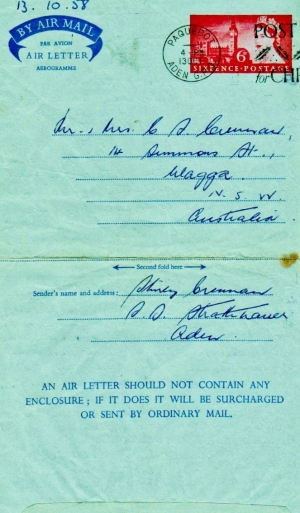



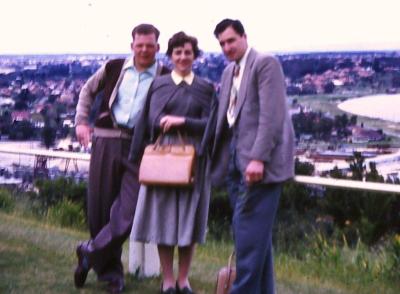

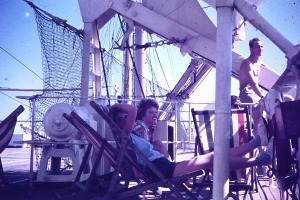



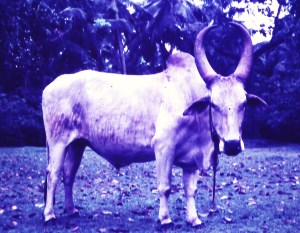
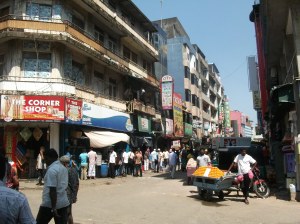
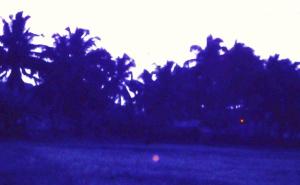


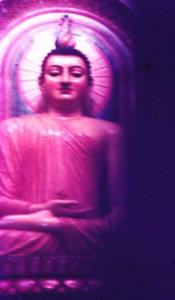
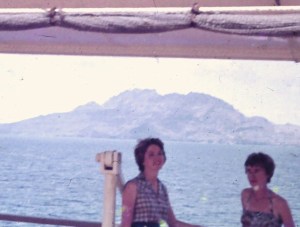

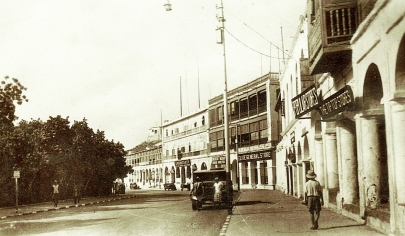
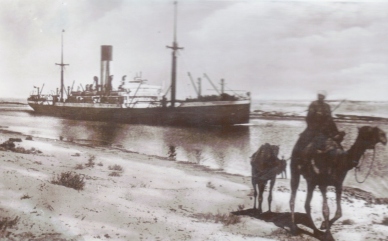
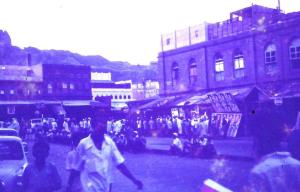
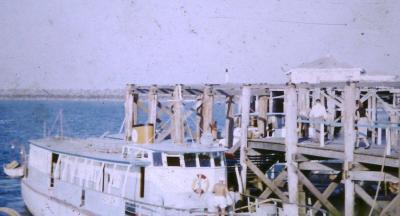
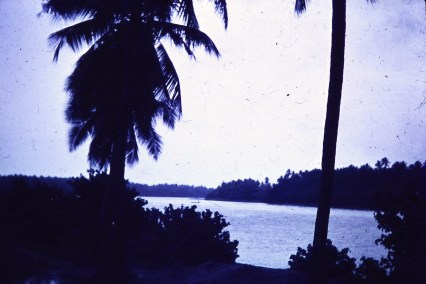
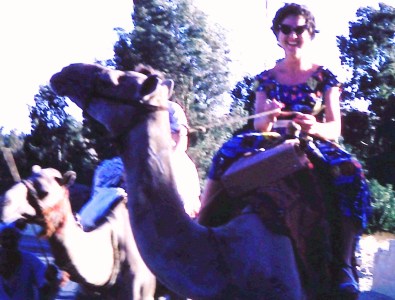


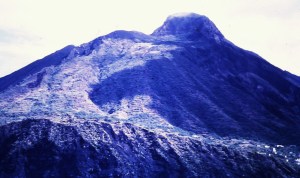
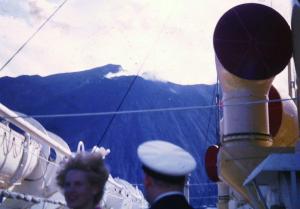
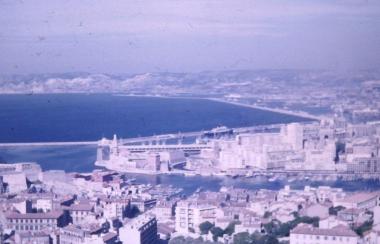

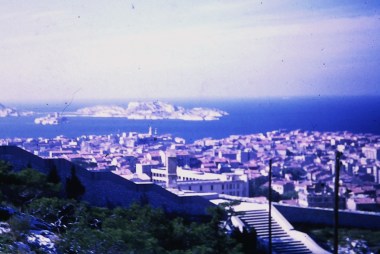


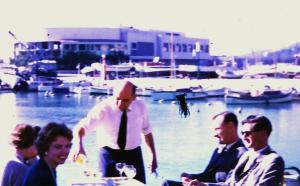
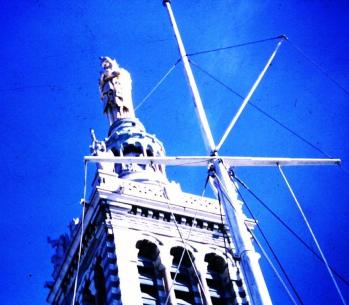
Wow! That’s a real adventure, and all those wonderful letters, what wonderful memories Elizabeth to have,
LikeLike
Fantastic account loved reading it. Went to Australia synced on the strathnaver December 1959, so remember some of your experiences
LikeLike
Hi Jim, I’d love to get in touch with you about your Strathnaver experience departing in Dec 1959, presumably arriving in Melbourne 1960? My grandad was on this ship and i’d love more than anything to get the passenger list for him and potentially put you in touch? He spoke to a gentleman before and it sparked great memories for them both ..
LikeLike
Hi Laurie I am happy that my story will help you to make contact with Jim Smee and that he can add more to your
grandfathers memories. I hope that you have found some stories on my web-site to interest you too.
I have had lots of pleasure putting it all together and getting peoples’ responses..
Best wishes from Elizabeh
LikeLike
Hi Jim The Strathnaver story was my first story on the blog and I was very nervous about writing it and wondering whether it was worth all the effort of trying to put it together with my daughter’s help, s0 receiving your comment was the first thing that happened to make it seem worthwhile – so a very belated thankyou. It was some time before I realized that it was possible to reply to comments and as you will see, I have added lots more since with only two chapters left – a last minute trip around Spain and the journey back to Oz in 1960-1! a very different experience this time on an Italian liner, the Conte Grande accompanying migrants from Europe and helping with English classes. Hope you find other stories to interest you. I specially enjoy adding the pics. best wishes and a happy Christmas from Elizabeth
LikeLike
I am writing second book of my autobiography which included a voyage from Sydney to London Tilbury in August/September 1958 on the S.S. Orion, calling at all the ports you mention (but we also went to Naples). While I do have quite a bit of memorabilia, alas, all the photos my husband took were lost by the chemist in London and my memory is hazy on some points, so it was great to read your account. Where was the Buddhist temple in Colombo which we also visited ? I thought it was in the main town or was it near Mt Lavinia?? It was indeed a wonderful journey and one of three voyages I made between the Antipodes and London between 1954 and 1973!! If you are interested and give me your address I could send you my NZ autobiography entitled A Fantasy Ago – New Zealand Memoir 1954-56. Best wishes Molly
LikeLiked by 1 person
I was delighted to receive your comments -. a shame about the lost photos. I had a similar experience with my photos taken later while hitch-hiking through great Britain. Thankyou for offering to send a copy of your autobiography – I would love to read it. I will send address details in an email.
I think that the Buddhist monastery was in the main town but I am not sure. Needless to say, there is so much detail I have forgotten,and it was typing up all the letters that put most of the stories together for me especially with the help of photos! which reminds me, it is high time I published the last two chapters – Spain, and the return voyage on The Conte Grande in 1960/1, which was bringing European migrants to Australia.
LikeLike
Elizabeth correct e-mail address below.
LikeLiked by 1 person